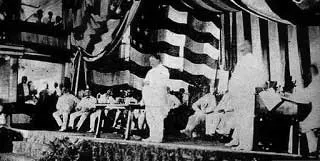The 1907 Philippine Assembly and the First Legislative Districts of Batangas under American Rule
In July 1902, the United States Congress passed the so-called Philippine Organic Act, which was the basic law for the Insular Government of the country’s newly-acquired territory of the Philippine Islands. Among the provisions of this law was the creation of an elected Philippine Assembly, depending of the following conditions: a) the ceasing of insurrection against American rule in the islands; b) the completion and publication of a national census; and c) at least two years of peace in the islands along with recognition of American sovereignty1.
Although the Philippine-American War ended in 1902, it was not until 1907 that the Philippine Commission passed Act Numbered 1582, which would become the basis for the “organization of the Philippine Assembly2.” The assembly would be composed of representatives from “all municipalities in the provinces entitled to send delegates3.”
Elections were scheduled for the 30th of July that same year, which would make the Philippine Assembly “the first legislative body in the Philippines fully chosen by national elections4.” It would function as the lower house of a two-tiered legislative body for the Philippine Islands, with the Philippine Commissioning functioning as the upper house.
 |
| William Howard Taft addressing the Philippine Assembly in 1907. Image taken from MGOH Gallery. [Public domain] |
- Balayan
- Calaca
- Lemery
- Nasugbu
- Taal
- Talisay and
- Tanauan
- Batangas Town
- Bauan
- Cuenca and
- Ibaan
- Lipa
- Lobo
- Rosario
- San Jose
- San Juan de Bocboc and
- Santo Tomas
2 “Act Numbered 1582,” published as part of “Acts of the Philippine Commission,” online at the Internet Archives.
3 Act Numbered 1582, op. cit.
4 “Philippine Assembly,” Wikipedia.
